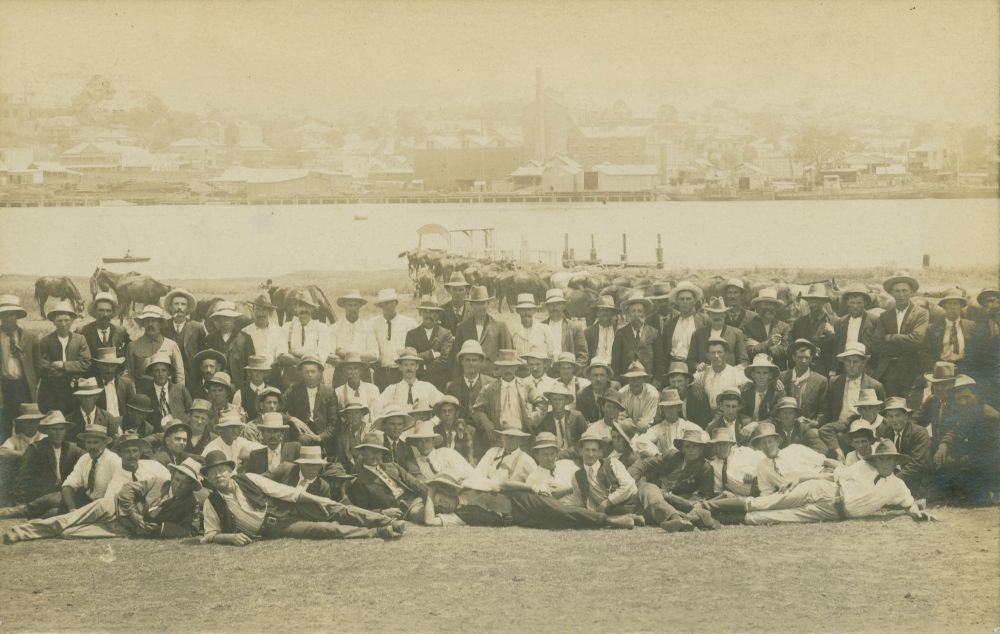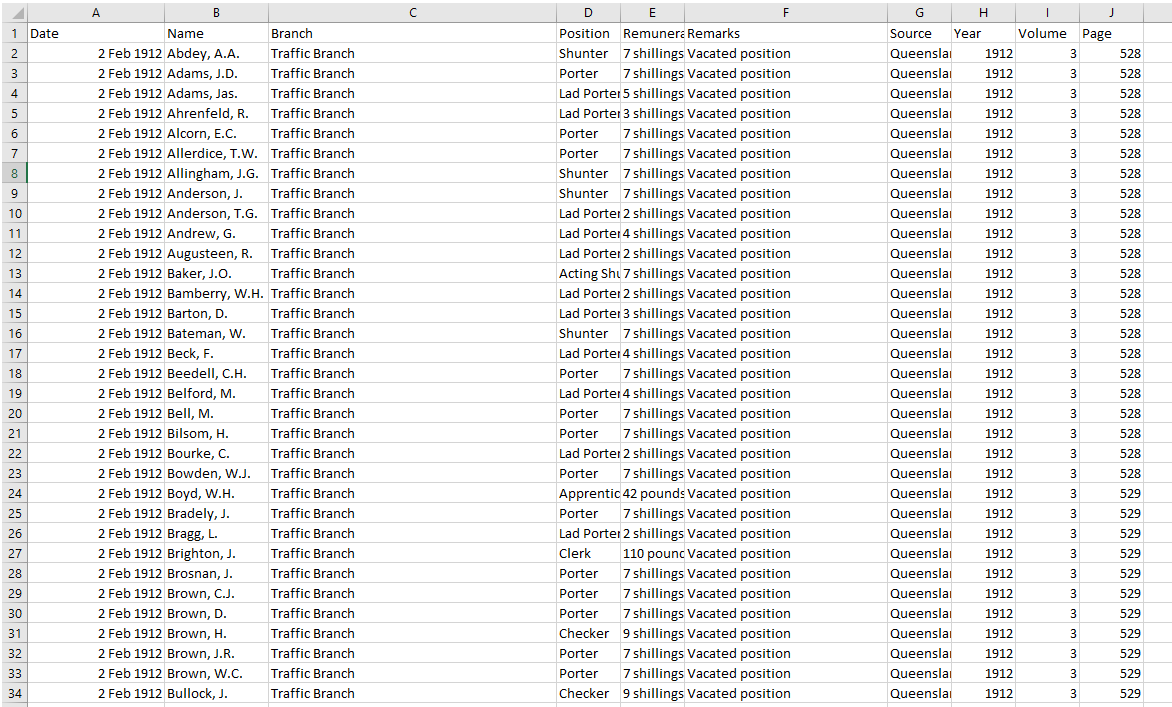Evidence in the Records: February 1912, “The Great Strike” and the “Vacated Positions” in the Railways.
By Christina Ealing-Godbold, Research Librarian, Information and Client Services | 27 July 2021
State Library of Queensland's indexes reveal rich details about family and local history. The Railway Workers index is often used by those tracing their railway ancestors. Jobs ranged from track-layers to train drivers, guards to clerks, and administrators to Railway Refreshment Room attendants. As one of the largest employers in the state, Queensland Railways records also provide snapshots of society throughout time.
In early 1912, the Great General Strike shocked Brisbane to the core. Railways workers, tramway workers, and labourers of all kind, including female factory workers, went on strike. Tramway men initiated action over the right to join a union and wear red union badges, earning the name "The Red Raggers". On 2 February 1912, known as ‘Black Friday’, the city came to a standstill as police charged strikers and protestors with batons. The General Strike Photograph Album contains images of the strike.

Men gathered in Albert Square for the General Strike in Brisbane 1912, John Oxley Library, State Library of Queensland, Image number: 10113-0001-0027.

Men gathered for the General Strike in Brisbane, 1912, John Oxley Library, State Library of Queensland, Image number: 10113-0001-0018.
The Railway Workers Index reveals more about the events of 2 February 1912. A snapshot from the Queensland Legislative Assembly votes and proceedings, later known as the Queensland Parliamentary Papers (1902 onwards), illustrates many men "vacated their positions". The men who did not attend work as usual were declared unemployed as a result of their union stand. These occupations included apprentices, porters, shunters and clerks.

Segment from Railway Workers index
Additionally, the index shows the renumeration received by each staff member per week in 1912. A lad porter earnt 2 shillings a day, and a shunter or male porter 7 shillings per day. A clerk earned an annual salary of 110 pounds or a little over 2 pounds per week. This equated to about 42 shillings a week or 8 shillings and 6 pence a day.
Great deprivation resulted for many families as their breadwinners were no longer able to bring home these 35 shillings per week. After some weeks, workers needed to return on the employer’s terms to feed their families and so the General Strike of 1912 failed. Other factors contributing to the failure of the strike included lack of support from interstate unions and the heavy handed tactics of the Special forces endorsed by Premier Digby Denham.

George Allom with Queensland Railway drivers and firemen, Rome Street Depot, Brisbane, 1912; John Oxley Library, State Library of Queensland, Negative number: 131734.
Opportunistic entrepreneurs screened strike pictures at the picture palaces, taking advantage of the increased political interest. As so many people attended the protests, there was a chance that those in the processions might catch a glimpse of their own image. The procession in Brisbane was reportedly three miles long. Many unionists attended from other Queensland cities as well as local men and women.

Part of an article, "Great Strike Pictures", published in the newspaper The Queensland Times, 24 February 1912, p.4.
Amazing social history can be found in the records and indexes at State Library. The vacated positions of the Railway workers on 2 February 1912 is just one of them.
Sources
State Library indexes for family history
State Library research guides for family history
Books
- My ancestor was a railway worker / Frank Hardy (FAMHIS 929.341).
- Railway records : a guide to sources / Cliff Edwards (FAMHIS 385.0941 2001)
- Was your grandfather a railwayman? : a directory of records relating to staff employed by railways in the following countries with details of material and repositories : United Kingdom, Australia, Canada, Eire, India, New Zealand, South Africa, Tasmania, United States of America and reference to Crown agencies for the colonies / compiled by Tom Richards (FAMHIS 929.34 2002).
Archival material
- 10113 General Strike Photograph Album 1912 - Original photograph album depicting the 1912 General Strike in Brisbane. Request to access from level 4 (Acc 10113 ).
CD-ROM resources
- Queensland railway employees 1889-1940 [CD-ROM] (QCFS 929.3943 2004). This information has been gathered from the annual lists of railway employees published in the Queensland Government Gazette. The index provides the name, age, position, branch and office of each individual employee.
- Queensland Government Railway Index to Staff Records 1878 – 1946 [CD-ROM] (QCFS 929.3943 2003) AND Queensland government railway : index to staff employed in various departments & stations 1889- 1912 [CD-ROM] (QCFS 385.025943 2007).
Indexes to some of the Railway Staff Registers held by Queensland State Archives. The indexes provide name, date of birth, date of appointment and a Queensland State Archives reference number.
More information
Family history month - /familyhistorymonth
Family history - /research-collections/family-history
Ask us - /plan-my-visit/services/ask-us
Library membership - /get-involved/become-member
One Search catalogue - http://onesearch.slq.qld.gov.au/
Comments
Your email address will not be published.
We welcome relevant, respectful comments.